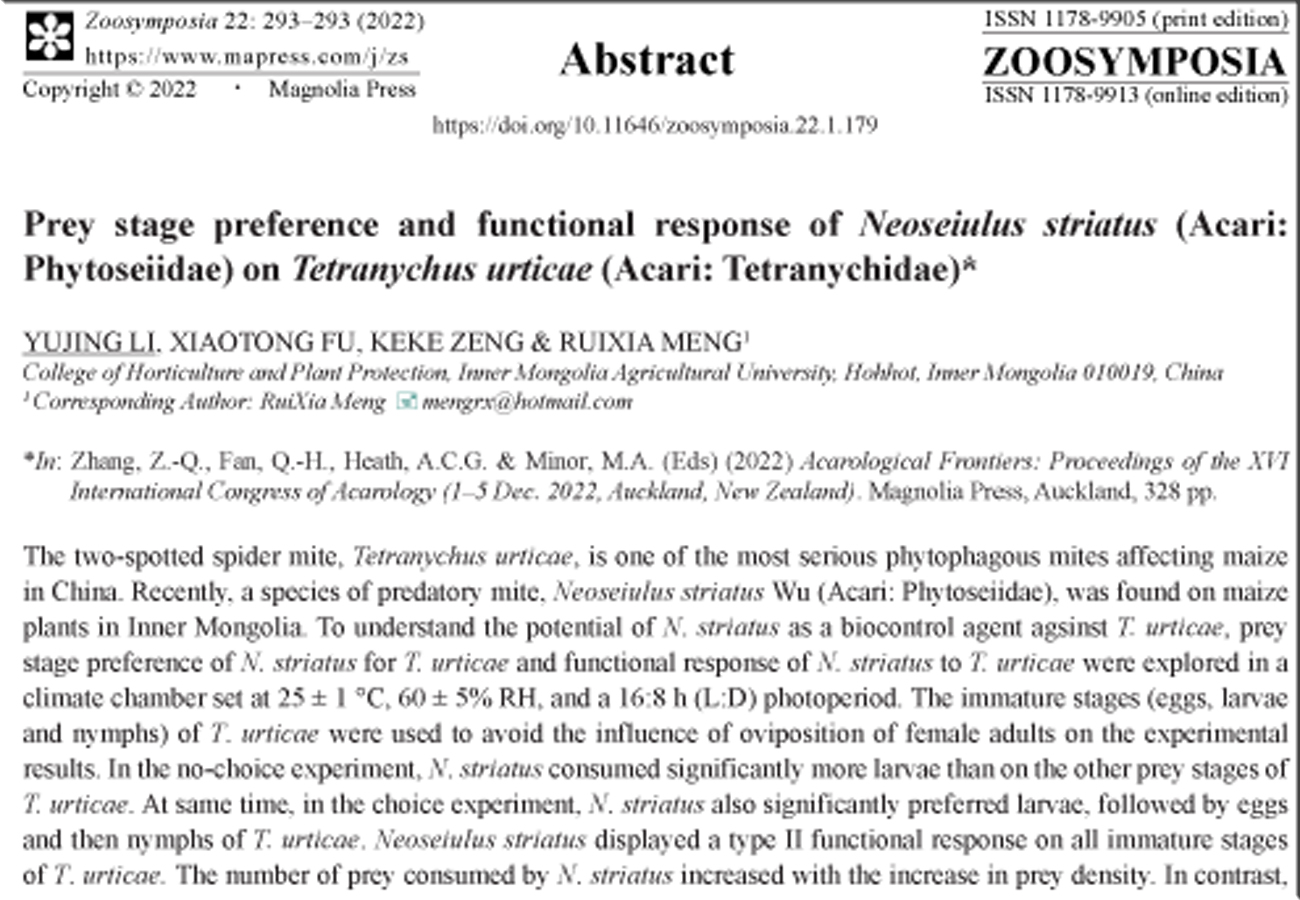Abstract
The two-spotted spider mite, Tetranychus urticae, is one of the most serious phytophagous mites affecting maize in China. Recently, a species of predatory mite, Neoseiulus striatus Wu (Acari: Phytoseiidae), was found on maize plants in Inner Mongolia. To understand the potential of N. striatus as a biocontrol agent agsinst T. urticae, prey stage preference of N. striatus for T. urticae and functional response of N. striatus to T. urticae were explored in a climate chamber set at 25 ± 1 °C, 60 ± 5% RH, and a 16:8 h (L:D) photoperiod. The immature stages (eggs, larvae and nymphs) of T. urticae were used to avoid the influence of oviposition of female adults on the experimental results. In the no-choice experiment, N. striatus consumed significantly more larvae than on the other prey stages of T. urticae. At same time, in the choice experiment, N. striatus also significantly preferred larvae, followed by eggs and then nymphs of T. urticae. Neoseiulus striatus displayed a type II functional response on all immature stages of T. urticae. The number of prey consumed by N. striatus increased with the increase in prey density. In contrast, the predation rate of N. striatus decreased with increasing prey density, indicating that the proportions of prey consumed by N. striatus were higher at lower prey densities. Meanwhile, the highest attack rate of N. striatus was recorded when it fed on larvae of T. urticae, whereas the shortest handling time of N. striatus was recorded when it fed on eggs of T. urticae. In conclusion, N. striatus appears to be a promising natural enemy against T. urticae, especially at low prey densities. Thus, releasing N. striatus at the early occurrence of T. urticae may be an efficient method for suppressing the population of T. urticae and prevent their establishment on maize.
References
-

